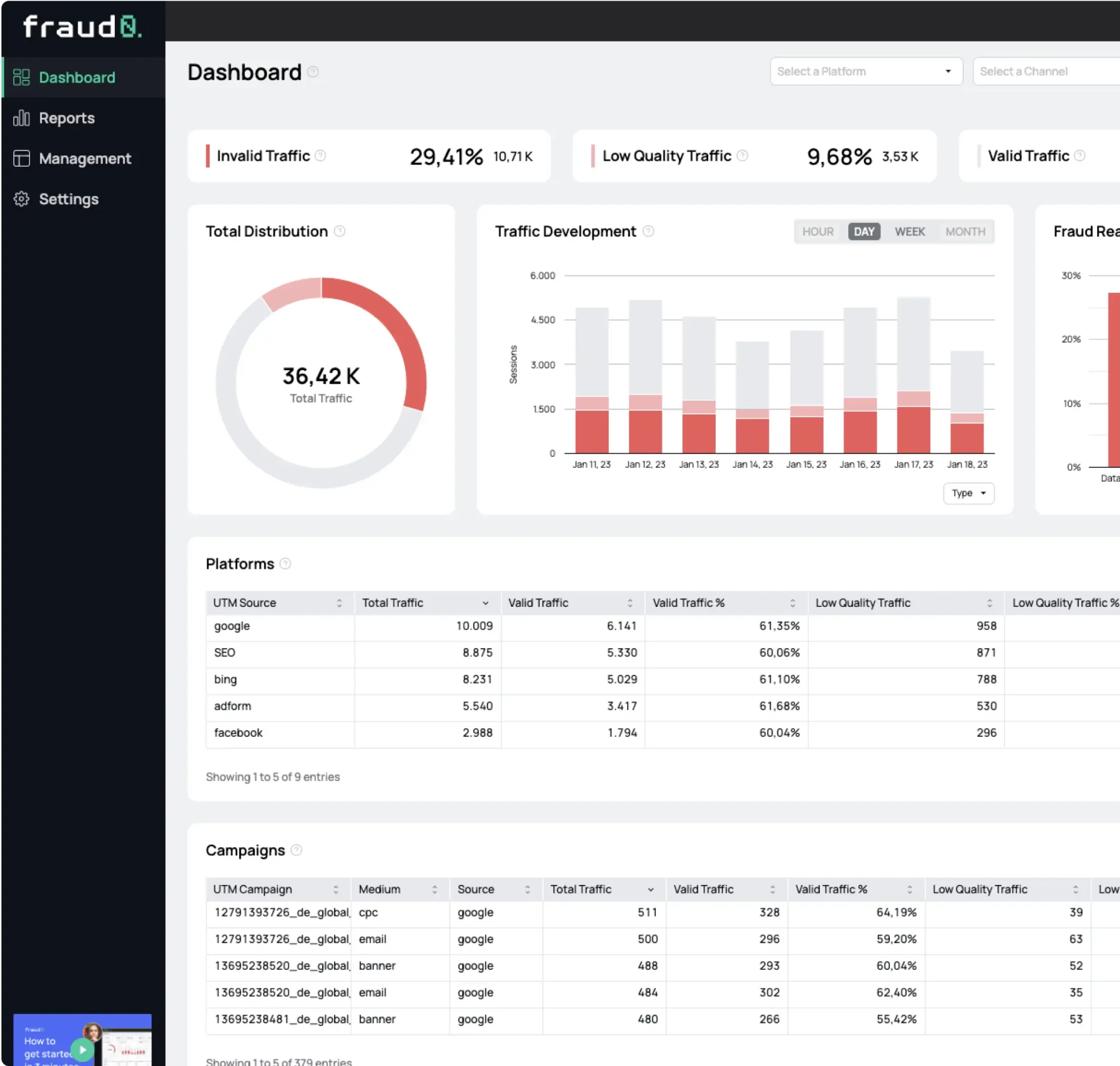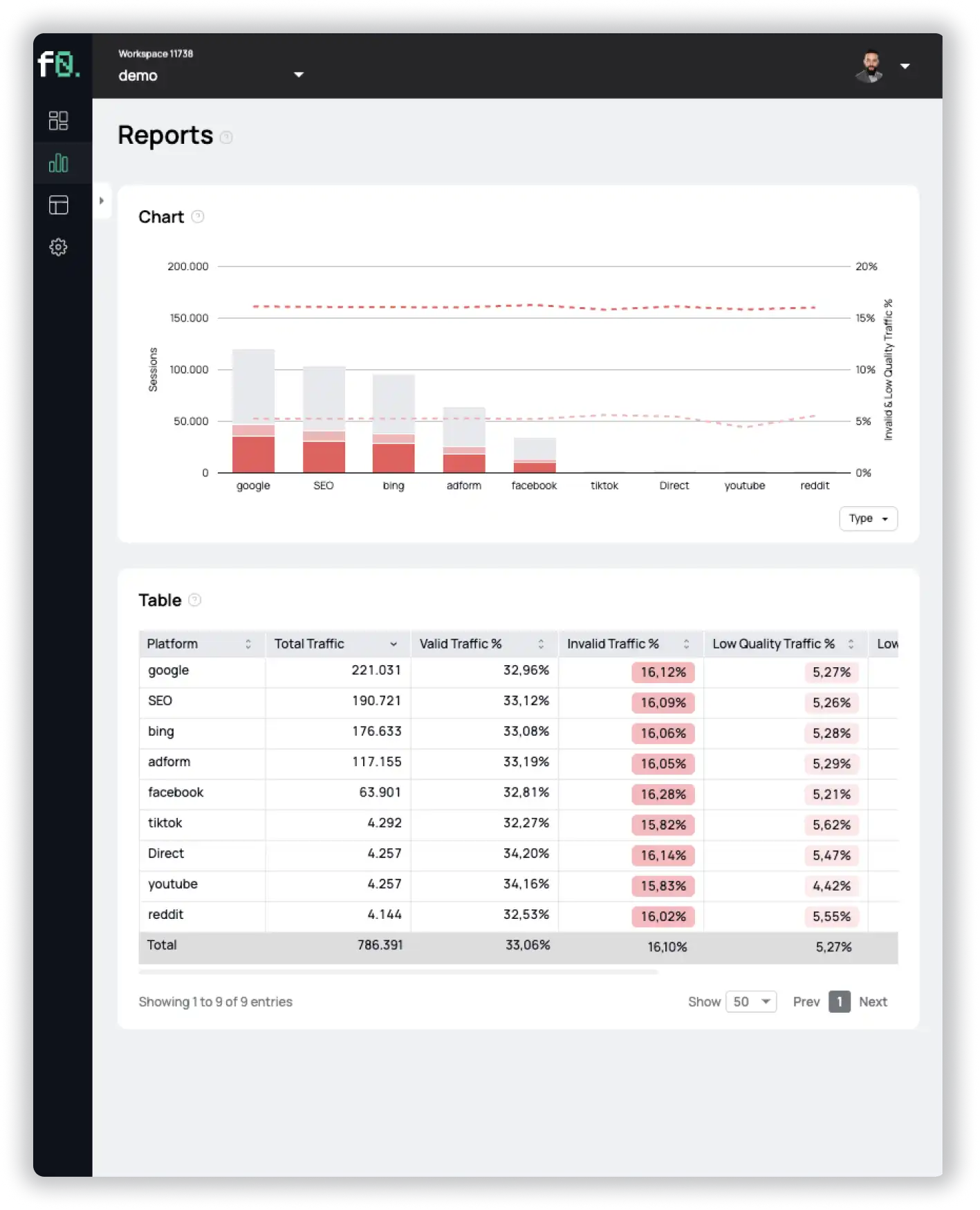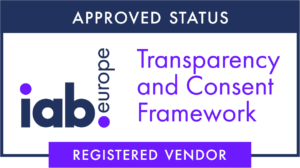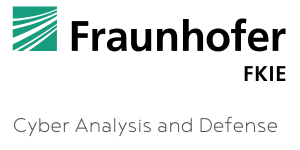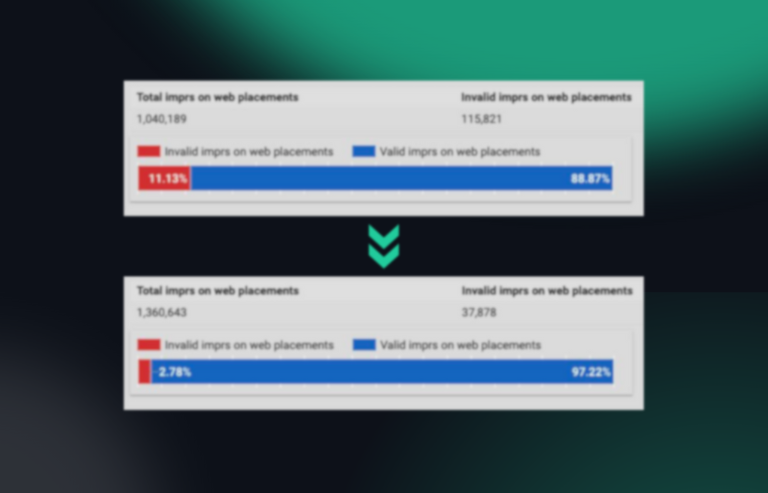- Blog
The impact of invalid traffic on your marketing

Oliver Kampmeier
Cybersecurity Content Specialist

At some point, you have probably wondered why your ad campaigns cost a lot of money and bring a lot of clicks, but real customers still stay away. One of the problems could be invalid traffic (IVT) to your marketing campaigns. Invalid traffic comes about in very different ways, and each has a different impact on your marketing.
What is invalid traffic (IVT)?
Invalid traffic is a term used to describe any form of non-human traffic. While most people consider only malicious bots as invalid traffic, there are also examples of non-malicious traffic that fall into the invalid traffic category, such as competitors, click farms, crawlers, and so on.
As a general rule of thumb, invalid traffic cannot convert and become a legitimate customer of your business.
We can break down the damage done by invalid traffic into 3 pillars:
- Ad Spend Waste
- Polluted Analytics
- Polluted Funnel
Fake Clicks
The biggest concern with invalid traffic for your marketing campaigns is fake clicks. Not only does it cost you money, but it also leads to skewed remarketing lists, polluted analytics, and can even mess up your opt-in rates. The goal of fraudsters who use bots to click ads is to move money from your budget into their pockets.
It is estimated that 17% of all ad clicks are fake, and the entire digital advertising industry will lose $23 billion in the U.S. and $68 billion globally by 2022 (Juniper Research).
Fake remarketing
Bot developers are smart people. To make their bots look and act like a human and have a “browsing history”, they want their bots to collect cookies and remarketing pixels from a variety of different websites and e-commerce stores. Simply put, bots pretend to shop online. They visit various (e-commerce) websites, add high-value items to their shopping carts to be seen as potentially valuable customers, and are therefore also tagged for remarketing. The more “browsing history” a bot has, the more it looks like a real human.
The consequences for you as an advertiser are bots in your remarketing lists and high cost-per-clicks (CPCs) due to the fake clicks mentioned above.
Skewed audiences
As a marketer, you work with target audiences in one way or another. This may be a campaign that promotes your product to a specific demographic, or a campaign that promotes your service to a specific geographic location. You want to have target audiences for your marketing efforts, to make the most of them and reduce scatter. What you may not know is that your audience is most likely already polluted with bots.
Similar to how bots mimic a “browsing history”, they also pretend to be a real person by sending various signals – including geographic location and demographic data. As a result, your campaign gets contaminated by them without your knowledge. The problem gets worse when you create similar audiences based on an already polluted audience – you will only attract more bad visitors who have absolutely no intention of converting. If you do not clean up your audiences first, you will repeat the same problem over and over again.
Inaccurate optimization
Advertising platforms try to optimize your ad campaigns with their algorithms based on various KPIs like click-through rate or form submissions. Every time a user with certain characteristics clicks on your ad, the algorithm tries to show your ad to similar users to optimize the delivery of your ads. The big problem with this is that bots click on ads much more often than humans, so ad delivery optimization gets skewed. The more bots click on your ads, the more bots will see your ad.
The same goes for optimizing the sources that your ad is clicked on most often. If algorithms see higher click-through rates on website A compared to website B, they will increase bids or budget allocation to website A instead of website B. What the algorithms can’t see and take into account is that most clicks on website A come from bots. So, the algorithm allocates a larger portion of your budget to fraudsters running website A. This can even go so far that your ads are seen for the most part by bots and not by real people.
Fake CMP stats
Your website complies with GDPR and various other laws around the world, and your analytics and retargeting scripts are triggered only after you obtain valid consent from your users. This means you don’t have to worry about fake bot traffic in your analytics and opt-in rates, right? Well, not quite. As mentioned earlier, bot developers are smart people. Nowadays, bots can automatically accept consent banners to collect various types of (remarketing) cookies and create a real-looking “browsing history”, making it difficult to distinguish them from real humans.
Some bots also explicitly want to appear in a specific target audience segments. For example, a bot visits various websites in the legal field, accepts all consent banners, and appears to be a highly valuable user in that segment because of the cookies set. The bot now appears as a lawyer or judge browsing the web. When a company targets this demographic segment, it not only receives skewed segment data, but also loses money from bots clicking on its ads.
Since bots are able to accept a consent banner, you as a marketer have skewed analysis, both opt-in rates from your CMP provider and your website statistics.
Fake leads
Some companies run ads with the goal of getting as many leads as possible. This can be either filling out a form, requesting a demo, or downloading a whitepaper or report. Now, if you think your gated content is safe from bots behind a form, you should think again. It’s easy for bots to fill out a form and get paid via cost-per-lead campaigns. Furthermore, adding a honeypot or a CAPTCHA to your form will no longer block bots, as they are fairly easy to solve or work around. For more information on how bots get around CAPTCHAs, see our article “7 Tools and Tactics for Ad Fraud”.
A few years ago, some of these leads were so obviously fake that you could tell which ones were made up just by looking at the address or name. But nowadays, it’s not so easy because there have been some major data breaches in the past and the fraudsters now have real personal data. These leads get into your CRM and cause a big headache for your sales team as they attempt to distinguish real people from fake bot entries.
Protect yourself today from invalid traffic
Invalid traffic is everywhere. If you’re serious about your marketing, stop wasting budget and making decisions based on inaccurate data. Protect yourself from invalid traffic today and sign up for a free trial!
- Published: March 10, 2022
- Updated: November 28, 2023
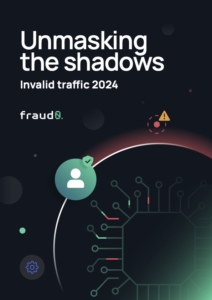
Learn everything you need to know about Invalid Traffic in 2024 based on our customers’ data. Including a breakdown into marketing channels, industries and much more.
1%, 4%, 36%?
